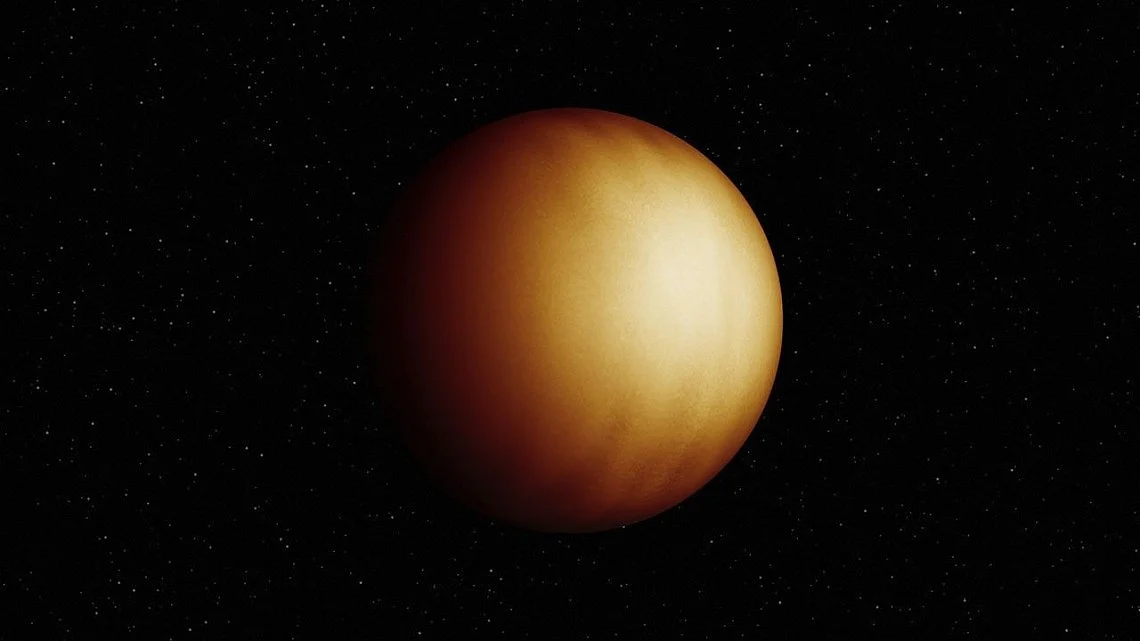
UAE: New 3D Exoplanet Map Reveals Hidden Weather, Heat Patterns, Atmosphere Layers Khaleej Times
An international team of astronomers, including a specialist from NYU Abu Dhabi (NYUAD), has created the first-ever three-dimensional map of an exoplanet - an“ultra-hot Jupiter” located beyond our Solar System.
Their study shows that this distant world has a very dramatic atmosphere, with different regions having very different temperatures. One part is so extremely hot that water molecules actually get torn apart.
Recommended For YouThe planet, known as WASP-18b, is located about 400 light years from Earth.“Rotating around its star nearly 20 times closer than Mercury to our Sun and completing its orbit in less than a day, this planet reaches temperatures around 3,500°C, making it one of the exoplanets with the most extreme atmospheric conditions we have studied to date,” said NYUAD Research Scientist Jasmina Blecic, who was part of the international astronomers.
Stay up to date with the latest news. Follow KT on WhatsApp Channels.
Exoplanets are planets that orbit stars outside of our own solar system. They are also called extrasolar planets. Some exoplanets are "rogue planets" that float freely in space without orbiting a star.
How does 3D mapping help scientists?Using a new technique called 3D eclipse mapping, scientists used data from NASA's James Webb Space Telescope (JWST) to build a detailed temperature map of the planet's atmosphere.
The method works by studying tiny changes in light when the planet moves behind its star. These small shifts help scientists identify differences in brightness linked to various parts of the atmosphere. By examining the light in multiple wavelengths, the team was able to reconstruct a 3D map showing temperature changes across latitude, longitude, and altitude.
The results show a circular“hotspot” on the side of the planet that always faces its star, surrounded by a cooler ring at the edges. In this hottest zone, researchers found clear signs that water vapor is breaking apart - a process that had been predicted but is now directly confirmed.
“This marks an important step toward understanding exoplanetary atmospheres in multi dimensions,” said Blecic.“Our work with JWST data allows us to observe how heat and chemistry interact under these extreme conditions, bringing us closer to understanding the diversity of planetary systems beyond our own.”
“We can now begin to view exoplanet atmospheres in 3D, much like how telescopes once revealed Jupiter's storms and cloud bands,” said Ryan Challener, a postdoctoral associate at Cornell University and the paper's lead author.
The study builds on earlier 2D mapping work by the same team, which first showed how powerful eclipse mapping can be using JWST observations. The new 3D approach will help scientists study many more of the thousands of known exoplanets with far greater detail.

Legal Disclaimer:
MENAFN provides the
information “as is” without warranty of any kind. We do not accept
any responsibility or liability for the accuracy, content, images,
videos, licenses, completeness, legality, or reliability of the information
contained in this article. If you have any complaints or copyright
issues related to this article, kindly contact the provider above.
















Comments
No comment